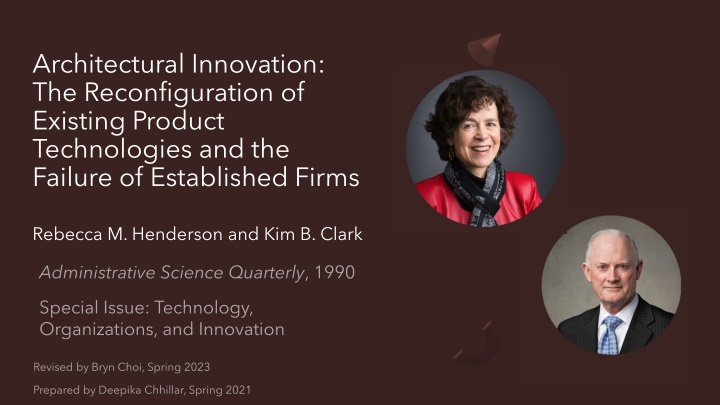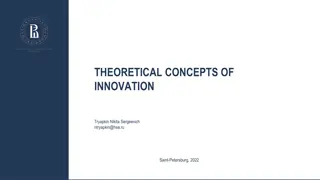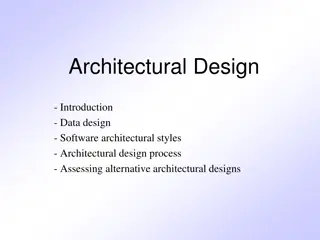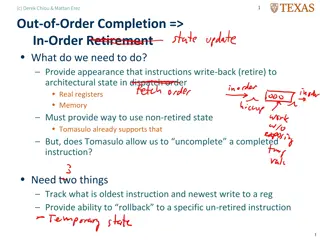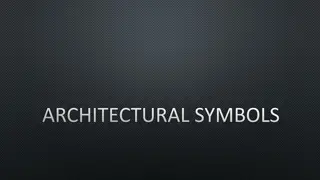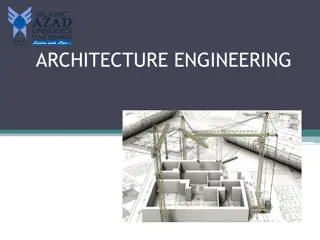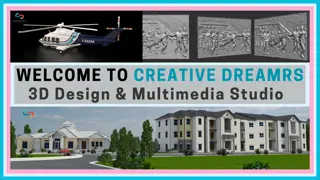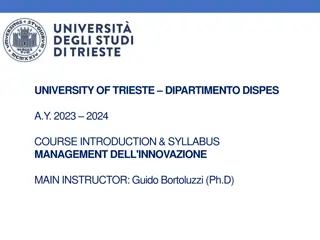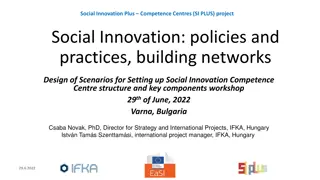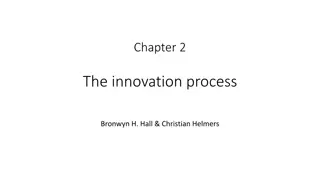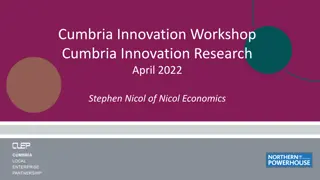Architectural Innovation and Competitive Consequences
The study delves into how minor innovations can lead to major competitive impacts in industries, exploring the Henderson-Clark Innovation Model and types of innovation - incremental, radical, modular, and architectural. It emphasizes the significance of understanding how even small changes can disrupt established firms and reshape industry landscapes.
Download Presentation

Please find below an Image/Link to download the presentation.
The content on the website is provided AS IS for your information and personal use only. It may not be sold, licensed, or shared on other websites without obtaining consent from the author.If you encounter any issues during the download, it is possible that the publisher has removed the file from their server.
You are allowed to download the files provided on this website for personal or commercial use, subject to the condition that they are used lawfully. All files are the property of their respective owners.
The content on the website is provided AS IS for your information and personal use only. It may not be sold, licensed, or shared on other websites without obtaining consent from the author.
E N D
Presentation Transcript
Architectural Innovation: The Reconfiguration of Existing Product Technologies and the Failure of Established Firms Rebecca M. Henderson and Kim B. Clark
Develop and apply a model that explains how minor innovations can have great competitive consequences. Research Objective Why do minor innovations in technological products hold the potential to have disastrous effects on industry incumbents?
The Henderson-Clark Innovation Model proposes four categories of innovation. A framework for defining Innovation These categories are based on whether the innovation relates to a product s architecture, components or both. When both are low, incremental innovation occurs and when both are high, radical innovation occur. Suggests that a given innovation may be less radical or more architectural, not to suggest that the world can be neatly divided into four quadrants.
Types of Innovation (off diagonal) Incremental innovation introduces relatively minor changes to the existing product exploits the potential of established design reinforces the competitive positions of established firms Radical innovation based on entirely new of engineering and scientific principles creates great difficulties for established firms to adapt/change organizational capabilities opens doors to successful entry of new firms or redefinition of an industry
Types of Innovation (off diagonal) Modular innovation/Component innovation Improving a product s components without significant impact on architecture Can be a source of competitive advantage (Sanchez & Mahoney, 1996) Architectural innovation Innovations that change the way in which the components of a product are linked together Destroys usefulness of its knowledge about the product s components This is the kind of innovation that confronted Xerox and RCA However, minor innovations can have great competitive consequences, e.g., the case of Xerox and small copiers and the American radio receiver market Research Puzzle!
Challenges posed by Architectural Innovation - Problem of the known Organizational Routines Assumption- Organizations build knowledge and capability around the recurrent tasks that they perform. To build and apply new architectural knowledge effectively, they face difficulty in switching from one learning mode to another and build new architectural knowledge in a context in which some of its old architectural knowledge may be relevant. Bounded Rationality Established organizations require significant time (and resources) to identify a particular innovation as architectural because of the way knowledge is organized and managed inside a firm Easier for new entrants to build the organizational flexibility (abandon old architectural knowledge and build new requires)
The Evolution of Component and Architectural Knowledge Technical evolution is usually characterized by periods of great experimentation followed by the acceptance of a dominant design (obtain economies of scale or take advantage of externalities) Organizations build knowledge and capability around the recurrent tasks that they perform. A dominant design is characterized both by a set of core design concepts that correspond to the major functions performed by the product Dominant design -> stable architectural knowledge (implicit) -> more attention to new component knowledge -> learn a lot about the dominant design
Empirical Study Two-year, field-based study of the photolithographic alignment equipment industry Industry characterized by much smaller firms and a much faster rate of technological innovation Study was designed to serve as an exploration of the validity of the concept of architectural innovation
Photolithography The process that transfers shapes from a template (photomask) onto a surface (silicon wafer) using light Used in micro manufacturing applications in digital device such as computers, phones Kasper's failure to understand the challenge posed by the proximity aligner is especially puzzling given its established position in the market and its depth of experience in photoli- thography.
Discussion and Future Research Assume that organizations are boundedly rational >> explore ways in which firm s history and culture affect formulation of architectural and component knowledge Assume that architectural knowledge embedded in routines and channels becomes inert and hard to change. >> explore the extent to which this can be avoided An architectural innovation s effect depends in a direct way on the nature of organizational learning >> what drives effective learning about new architectures and how learning about components may be related to it? The effect of technology on competitive strategy
Discussion Question How do we explain the fall of incumbents in the service industry who usually does not have a product-based architecture, and so, ideally, would have more attention channeled towards identifying architectural innovation among their competitors? It ain twhat you don t know that gets you into trouble. It s what you know for sure that just ain tso. * * Misattributed to Mark Twain (a different version was originally given by Leo Tolstoy, 1897)
